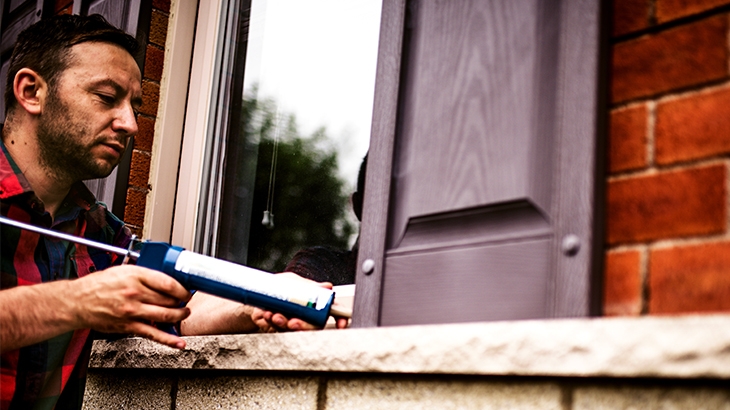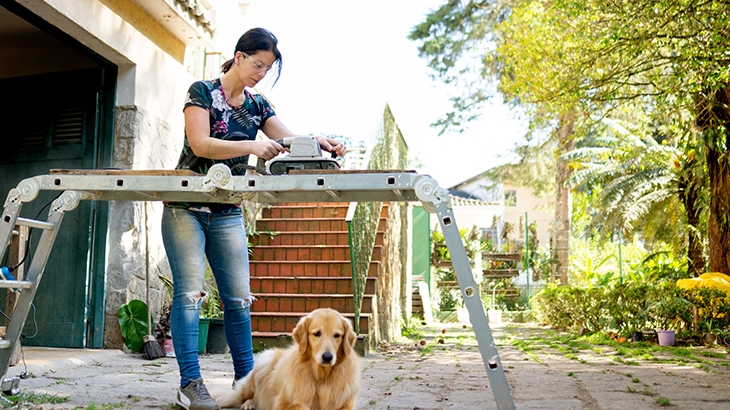How to Get Your Home Ready for Winter and Save Money on Energy Costs
As winter gets closer and closer, a few chores can help prepare your home to keep you nice and cozy. Some prevention measures, insulation improvements, and energy-saving habits can go a long way toward saving you some money. Read on for a few ways to help you get your home winter-ready.

- Seal Air Leaks and Insulate
Sealing your attic, basement, and/or crawlspace can help prevent heat loss and make sure you don't have leaks where ice and rain can get in. Look around windows, doors, and any openings in your home and check for drafts or air leaks. Weatherstripping, caulking, and door sweeps are all cost-effective ways to prevent those cold drafts and keep warm air inside. - Check Windows and Doors
This is the biggest source of heat (and money) loss for many households. For example, a 1/8-inch gap under a 36-inch-wide exterior door may let as much cold air into your home as a hole as wide as a soda can, so filling those gaps can save you quite a bit on your energy bill. Also, consider using insulating window films or installing storm windows to improve insulation, and for doors, make sure they close tightly and install draft guards to prevent drafts. - Service or Upgrade Your Heating System
Coming home to a warm house after work is nice, but it could save you money, too. Instead of cranking the heat when you get home, program your thermostat to kick on around 4:45 p.m. Don't let the temperature drop below 60-65 degrees because that can make your system work too hard to heat your home back up. Set a schedule for other times when your house could be cooler, too, like at night when everyone is asleep. Think about scheduling a professional inspection and service to ensure your system is working properly and prevent it from breaking down. That isn't necessarily a yearly requirement, but at least every six months, clean or replace your filters for optimal efficiency. - Fireplace and Chimney Maintenance
Schedule a cleaning and inspection for safe and efficient operation if you have either. This doesn't necessarily need to be done every year, but having an expert double-check things can prevent bigger problems in the future. Remember to close the damper when you're not using the fireplace to prevent warm air from escaping (and birds, bugs, or other small creatures coming into your house). - Inspect Your Gutters and Roof
Regularly clean out and inspect your gutters, and your roof while you're up there. This prevents ice dams that can cause damage, and checking for missing or damaged shingles and replacing them will prevent heat loss and potential leaks that can cause mold in your attic or water damage on your ceiling. - Take Advantage of Sunlight
During peak daylight hours, open curtains or blinds to allow natural sunlight to help warm your home. Close them back up at night to trap the heat and reduce heat loss through windows. If you don't have curtains already, think about getting them for each window because they can help keep cold air out and warm air in when closed. - Use Energy-Efficient Bulbs and Lighting
Replacing traditional bulbs with energy-efficient LED bulbs help your home use less energy. If you can, spring for motion-sensing or timer-equipped outdoor lighting to cut back on use without having to remember to switch them off. - Insulate Your Water Heater and Pipes
Insulating any exposed pipes will prevent freezing and possible bursts. Insulating your hot water tank helps ease the burden so it doesn't work as hard and helps to keep your hot water hot. You can also adjust the temperature setting on your water heater to save energy and still get water that's hot enough to use every day. Check with your local plumber about a temperature that's right for your area and the location of the water heater in your home. - Landscaping and Yard Work
While this won't save you money on energy bills, it can help prevent damage to your home. Trim tree branches that might pose a threat during winter storms (branches hanging over or near your fence or roof). Drain and store your garden hoses and shut off exterior water sources to prevent freezing.
WaFd Bank is Here to Help
While we can't come over to clean the chimney, WaFd Bank is here for all your banking needs! Our friendly bankers are available if you have any questions on budgeting, building credit, and much more, and WaFd offers you the digital tools you need to get your banking done. With checking and savings accounts that come with all the tools and services you need to manage your finances, WaFd offers personal banking options to fit your needs. Apply online, give us a call at 800-324-9375, or visit your neighborhood branch to open your account.
Did you find this article helpful? Share it!


